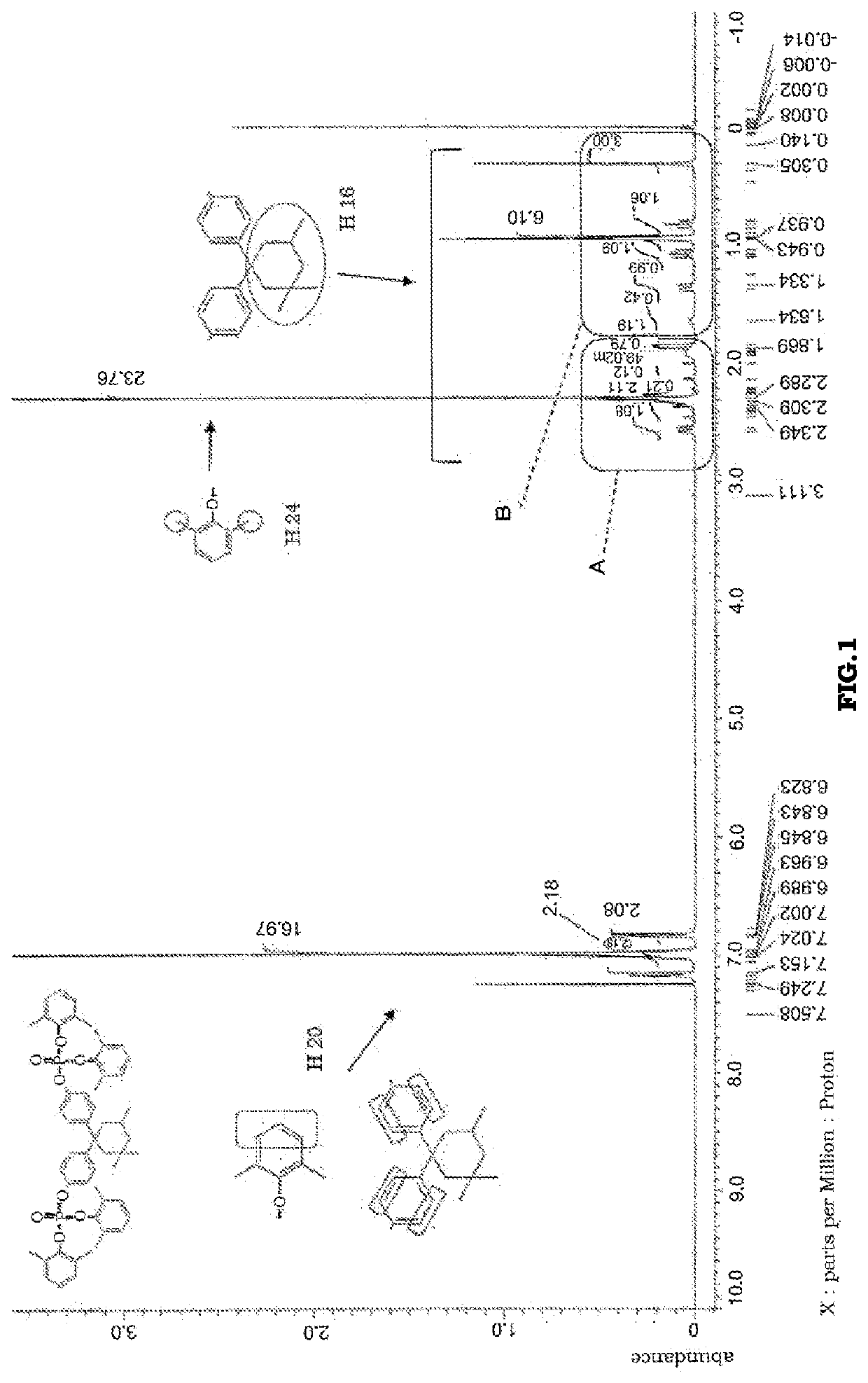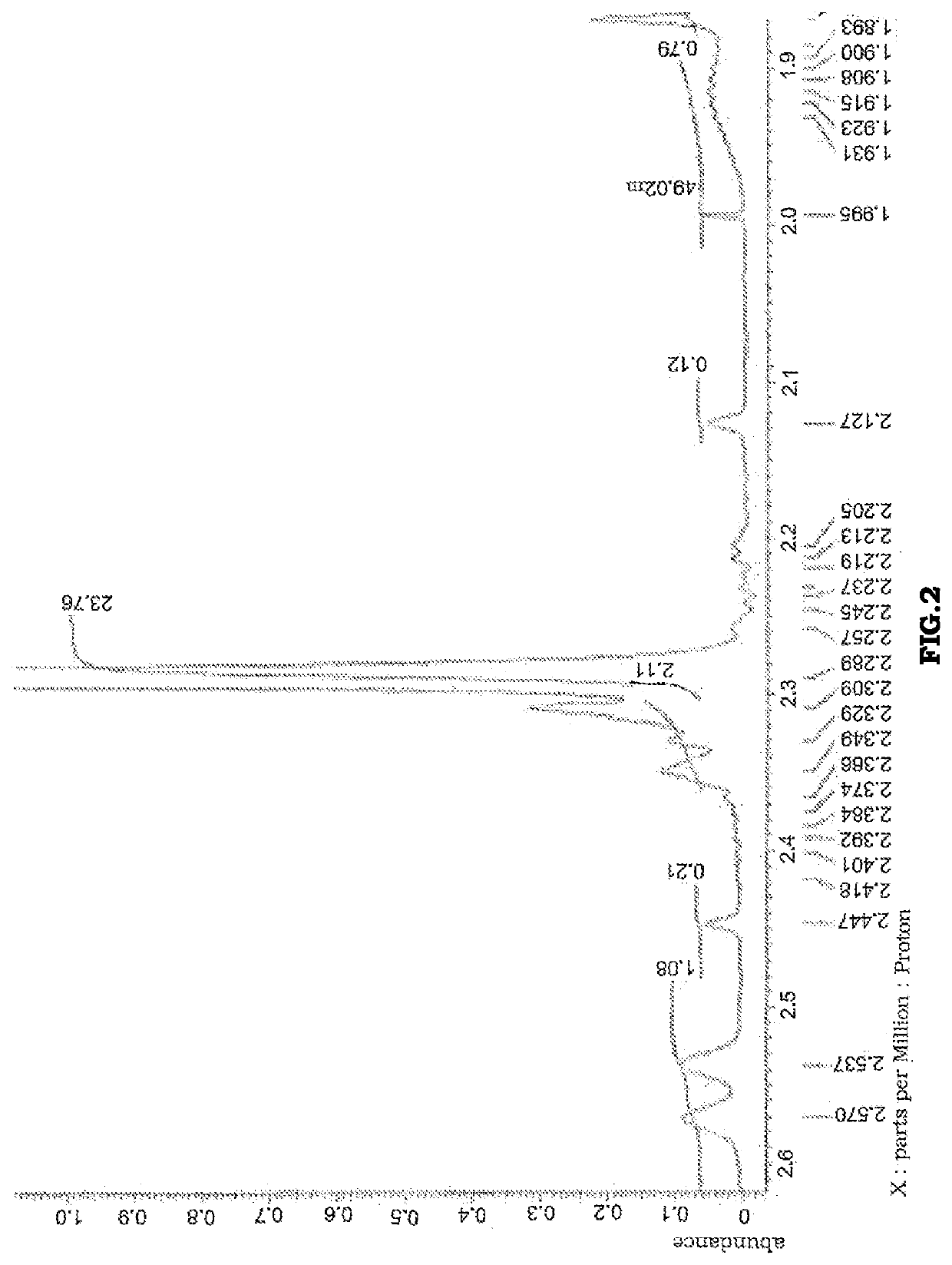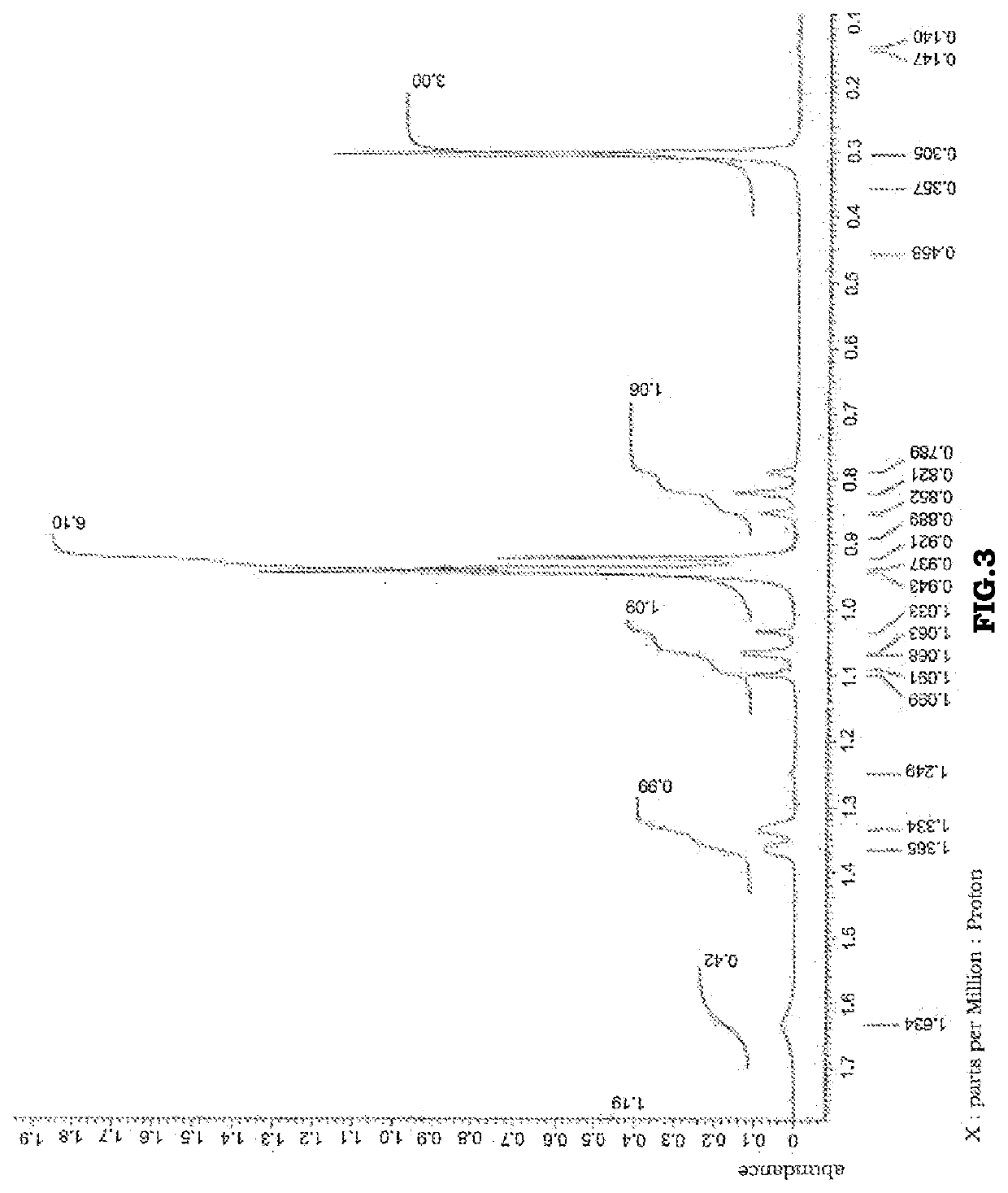Flame retardant for thermosetting resin including aromatic phosphoric acid ester, thermosetting resin composition including same, and cured material and application of same
a technology of thermosetting resin and flame retardant, which is applied in the direction of application, group 5/15 element organic compounds, and other domestic articles, can solve the problems of inability to stably impart flame retardancy to the resin, and the condensed phosphoric acid ester had a problem of not being able to meet the performance of laminate sheets, so as to achieve sufficient flame retardancy and reduce heat resistance
- Summary
- Abstract
- Description
- Claims
- Application Information
AI Technical Summary
Benefits of technology
Problems solved by technology
Method used
Image
Examples
synthesis example 1
lphosphorochloridate
[0130]A 2-liter capacity four-necked flask equipped with a stirrer, a thermometer, and a hydrochloric acid collecting device (condenser connected with a water scrubber) was filled with 767 g of phosphorus oxychloride, 1,200 g of 2,6-xylenol, 140 g of xylene as a solvent, and 6.2 g of magnesium chloride as a catalyst.
[0131]The resulting mixed solution was gradually heated to a temperature of 160° C. over about 3 hours while stirred and was allowed for a reaction, and hydrogen chloride (hydrochloric acid gas) produced from the reaction was collected with the water scrubber. Thereafter, a pressure in the flask was gradually reduced to 20 kPa at the same temperature (160° C.); and xylene, unreacted phosphorus oxychloride and 2,6-xylenol, and hydrogen chloride as a byproduct were removed, obtaining 1,700 g of the reaction mixture mainly containing dixylylphosphorochloridate represented by the following structural formula. A content rate of chlorine in the reaction mix...
synthesis example 2
ic Phosphoric Acid Ester 1
[0132]A two-liter capacity four-necked flask equipped with a stirrer, a thermometer, a dropping funnel, and a condenser was filled with 460 g of the dixylylphosphorochloridate obtained in Synthesis Example 1, 196 g of bisphenol 1, 540 g of toluene as a solvent, and 140 g of tetrahydrofuran. The dropping funnel was filled with 151 g of triethylamine as a hydrogen halide scavenger.
[0133]The mixed solution in the four-necked flask was heated to a temperature of 65° C. while stirred; and the triethylamine in the dropping funnel was dropped into the mixed solution over 1 hour and 30 minutes while the same temperature (65° C.) was maintained. After the dropping was completed, the resulting mixed solution was stirred for 2 hours at the same temperature (65° C.), obtaining a reaction product.
[0134]The reaction product thereby obtained was washed with dilute hydrochloric acid and water, and was neutralized and washed with a sodium hydroxide aqueous solution, and the...
synthesis example 3
ic Phosphoric Acid Ester 4
[0137]569 g of a pale yellow transparent glassy solid was obtained in the same manner as in Synthesis Example 2, except that 216 g of bisphenol 2 was used instead of bisphenol 1.
[0138]It was confirmed by 1H-NMR that the product thereby obtained contained, as a main component, aromatic phosphoric acid ester 4 represented by the following structural formula. A 1H-NMR chart is shown in FIG. 4.
PUM
| Property | Measurement | Unit |
|---|---|---|
| temperature | aaaaa | aaaaa |
| temperature | aaaaa | aaaaa |
| temperature | aaaaa | aaaaa |
Abstract
Description
Claims
Application Information
 Login to View More
Login to View More - R&D
- Intellectual Property
- Life Sciences
- Materials
- Tech Scout
- Unparalleled Data Quality
- Higher Quality Content
- 60% Fewer Hallucinations
Browse by: Latest US Patents, China's latest patents, Technical Efficacy Thesaurus, Application Domain, Technology Topic, Popular Technical Reports.
© 2025 PatSnap. All rights reserved.Legal|Privacy policy|Modern Slavery Act Transparency Statement|Sitemap|About US| Contact US: help@patsnap.com



